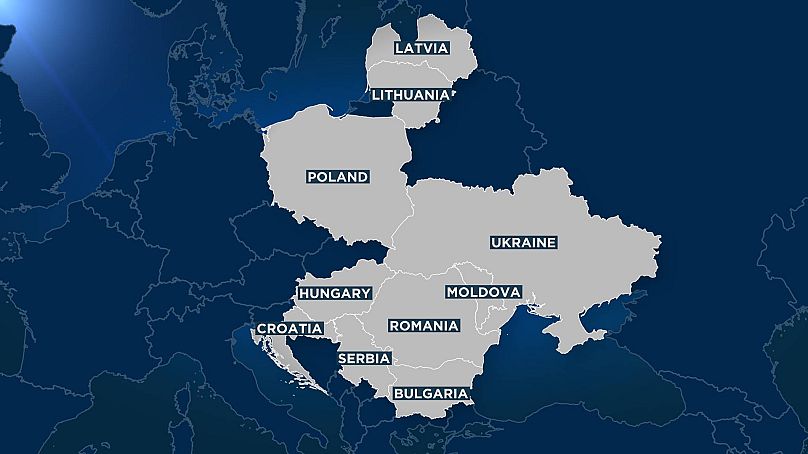Bulgaria is estimated to shrink the most over the coming decades, but a host of other countries in eastern Europe are also in the firing line: Latvia, Moldova, Ukraine, Croatia, Lithuania, Romania, Serbia, Poland and Hungary.
Eastern Europe is set to have all but one of the world’s fastest-shrinking populations over the coming decades, according to official estimates.
The number of people in Bulgaria will tumble the quickest, says the United Nations, from 7.08 million now to 5.42m by 2050.
A swathe of other eastern European countries will suffer a similar fate: from Latvia and Lithuania in the north to Romania and Moldova further south.
The US Virgin Islands is the only other country in the world that will see its population shrink at the same rate.
Experts say falling fertility rates and economic emigration are combining to reduce the number of people in some eastern European countries.
The fertility rate of European Union states has fallen from 2.6 births per woman in 1960 to 1.6 in 2015.
Poland, whose population is predicted to fall by six million over the next three decades, had a fertility rate of 1.32 in 2015. It is one of the lowest levels in the European Union - only Portugal’s was smaller.
It has prompted a rather drastic — if comic — remedy: the country's health ministry released a video urging its citizens to 'breed like rabbits'.
Emigration has also played a major role in the falling populations. Many of the countries predicted to see big falls have also seen a ‘brain drain’ in recent years as its young and educated move abroad for better opportunities.
This has especially been the case for the most-recent countries to join the EU, such as Bulgaria and Romania.
Brussels-based economic think-tank Bruegel claimed in a recent report that the population of young people in Latvia and Lithuania dropped by up to 25% between 2008-2014 as a result of emigration.
“Emigration is certainly a major factor,” Bernd Parusel, a migration expert with the European Migration Network told Euronews.
“Especially young people tend to leave, to study or work in other EU member states or even farther abroad.
“There are still huge differences in wealth, prosperity and incomes between some of these countries and western or northern European ones.
“It is not certain that current emigration patterns are permanent, however.
“Some young emigrants might eventually chose to come back, or circulate between different countries."
Bruegel backs this up: Bulgaria, Hungary, Latvia, Lithuania and Estonia had more migrants return in 2016 than in previous years.
The typical profile of someone coming back is young, single, male and employed in a low-skilled job abroad despite being well-educated.
But the number of returnees is modest and unlikely to impact upon the negative consequences of ‘brain drain’: declining productivity, a lack of innovation and increasing inequality.
So, what can be done? One solution is to import people from elsewhere. But some of the countries predicted to be most-affected by population decline — such as Poland and Hungary — refused to take any of Europe’s resettled refugees.
“Being hostile to refugees certainly doesn’t make things easier,” added Parusel. “When a highly-qualified, non-EU migrant decides where to go, requirements for visas and work permits are not the only factor that matters, nor are salaries.
“The reputation of a country in terms of welcoming foreigners, including refugees, is important as well.
“To reverse the trend and quickly establish a welcoming attitude is not easy, however.
“We have seen that some countries have set up schemes to receive refugees via organised resettlement.
“In many cases, these refugees have disappeared again to try to establish themselves in other parts of the EU.”












